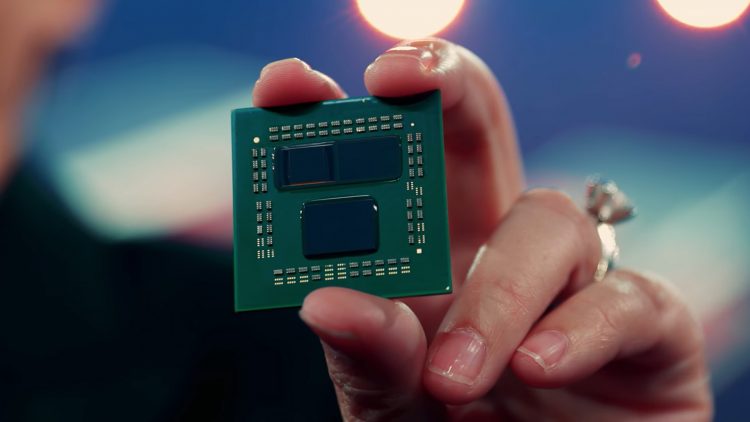Zen 4 is projected to be the next big thing for AMD CPUs, but the latest reports from established leakers suggest that the core count will not expand past 16 cores for the next generation. Instead, it seems that AMD will focus on improving performance in other ways, such as via IPC gains, cache, and frequency upgrades. These are just assumptions, of course. But we do know, according to AMD’s own Zen roadmap, that the next architecture will also feature a better process node to help achieve large improvements.
AMD’s Zen architectures have made leaps and bounds in performance over the past several generations thanks to chiplet designs and an ever-growing prowess in performance-per-watt efficiency. The latter has been particularly apparent with the Zen 3 iteration that made large enough gains to dethrone Intel in both gaming and workload performance.
A core audience
However, earlier successes for the Zen architectures were largely due to AMD’s ability to scale core counts efficiently and cheaply. This wasn’t massively popular with the gaming crowd since it didn’t translate directly to fps, but content creators and other professionals loved the multi-tasking capabilities. In fact, they loved the high core counts so much that some have expressed disappointment with AMD for not increasing Ryzen core count maximums since the Zen 2-based 3000 Series.

Pictured is a recently revealed 5900X prototype with a new 3D stacked V-Cache design. AMD has been getting creative recently to improve performance for CPUs with the same core counts by as much as 15%. (Image credit: AMD).
While it is true that AMD has stagnated on core counts for Ryzen, it’s not to say that it’s actually a bad thing. Most consumers still don’t even buy the high end CPUs simply because they don’t need that many cores. This is also true with gamers, and it’s arguable that 16 cores is more than enough cores for many years to come. Instead, AMD has focused on improving its architecture in other ways like efficiency and single-threaded performance that result in better fps. Just take a look at how good the 5600X objectively is and that proves the point.
With core counts projected to remain the same for Zen 4 Ryzen CPUs, AMD is pushing ahead with different product lineups like Threadripper and EPYC to cater to the professionals that have different needs than common consumers. For now, it seems that AMD’s focus is on improving Zen in other areas to catch up to Intel in terms of overall architecture efficiency. After all, Intel has managed to keep up in performance with AMD for a while now despite a massive node disparity. AMD can’t rely on manufacturing partner TSMC forever to help it gain an edge over Intel. Especially now that Intel is getting ready to launch new CPU designs and transition to massively better manufacturing nodes by 2024.
Yep. As of now Raphael tops out at 16 Cores.
However let’s all remember that Bergamo will bring more cores than Genoa to SP5.
Don’t rule out other products from AMD on AM5… ? https://t.co/otBX2Vowye
— Moore’s Law Is Dead (@mooreslawisdead) July 14, 2024
PC Invasion – FeedDDD
Source link
Related Post:
- It’s looking likely that AMD will introduce onboard graphics with Zen 4 Ryzen CPUs
- AMD’s prototype Zen CPU delivers 15% gaming boost and will be in production ‘by the end of the year’
- Windows 11 might find its way onto older Intel and AMD CPUs after all
- AMD’s most affordable Zen 3 CPU, the Ryzen 5 5600X, is down to $280
- Windows 11 doesn’t officially support first-gen AMD Ryzen CPUs, but don’t panic just yet
- AMD’s best CPUs are back in stock at the MSRP, making them unprofitable for resellers
- AMD’s Ryzen 5000 series CPUs are getting cheaper ahead of new chip launches
- Intel’s Core i7 10700KF is still an excellent gaming CPU gaming especially for $240
- Metal Max Series’ Future Revealed With Metal Max Wild West & Metal Saga: Hangyaku No Rouka
- Intel Alder Lake CPUs might be a blessing for gaming PCs
